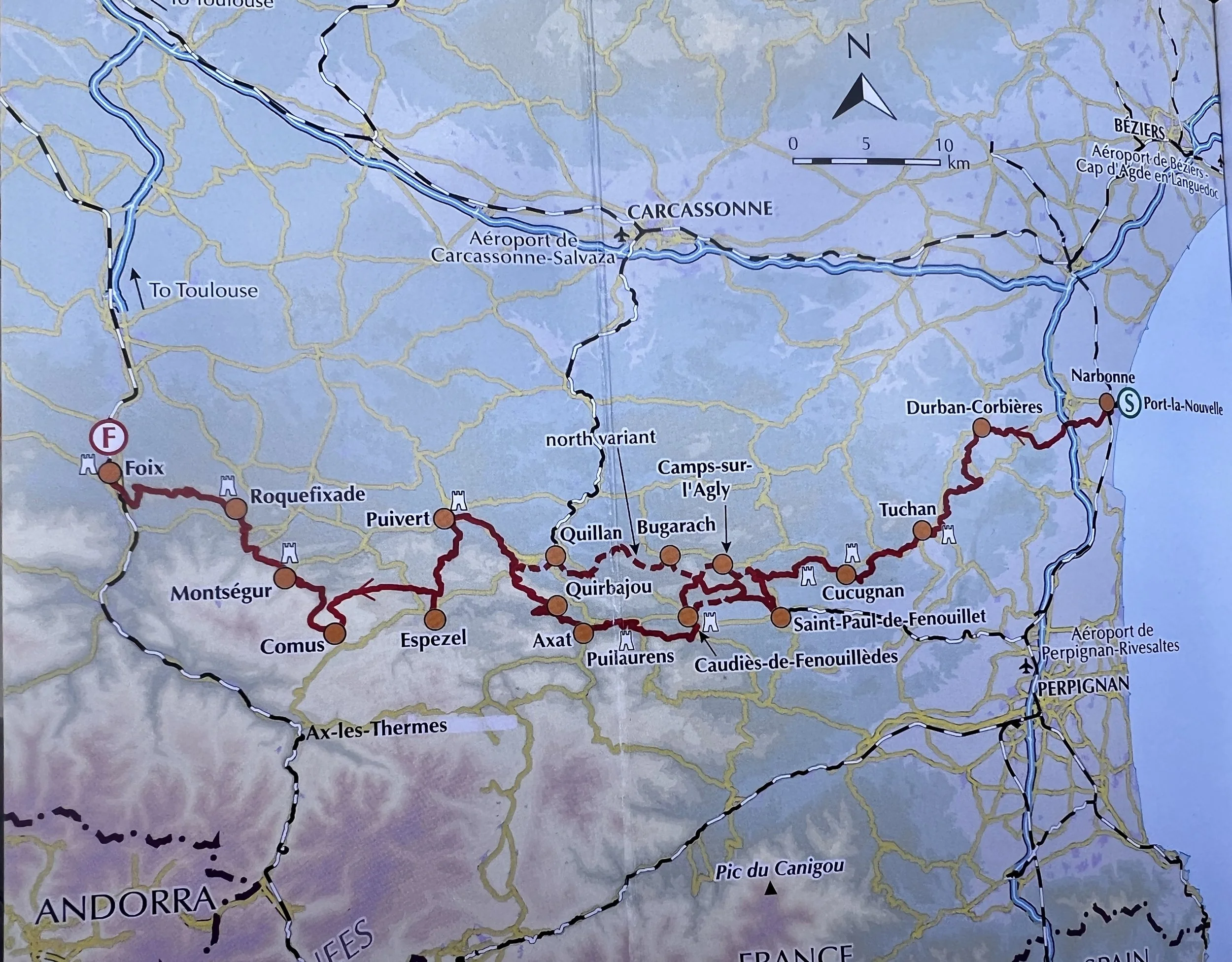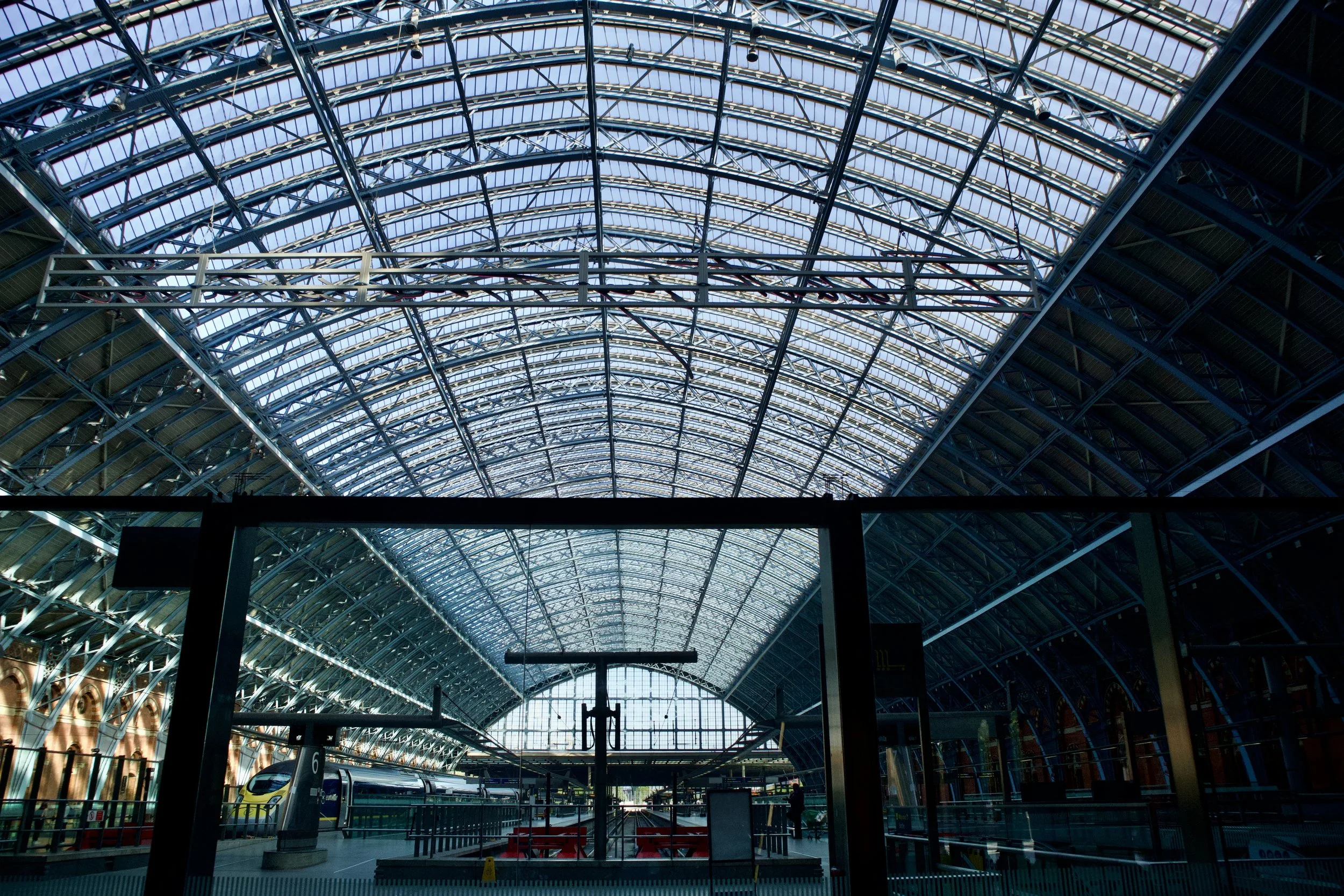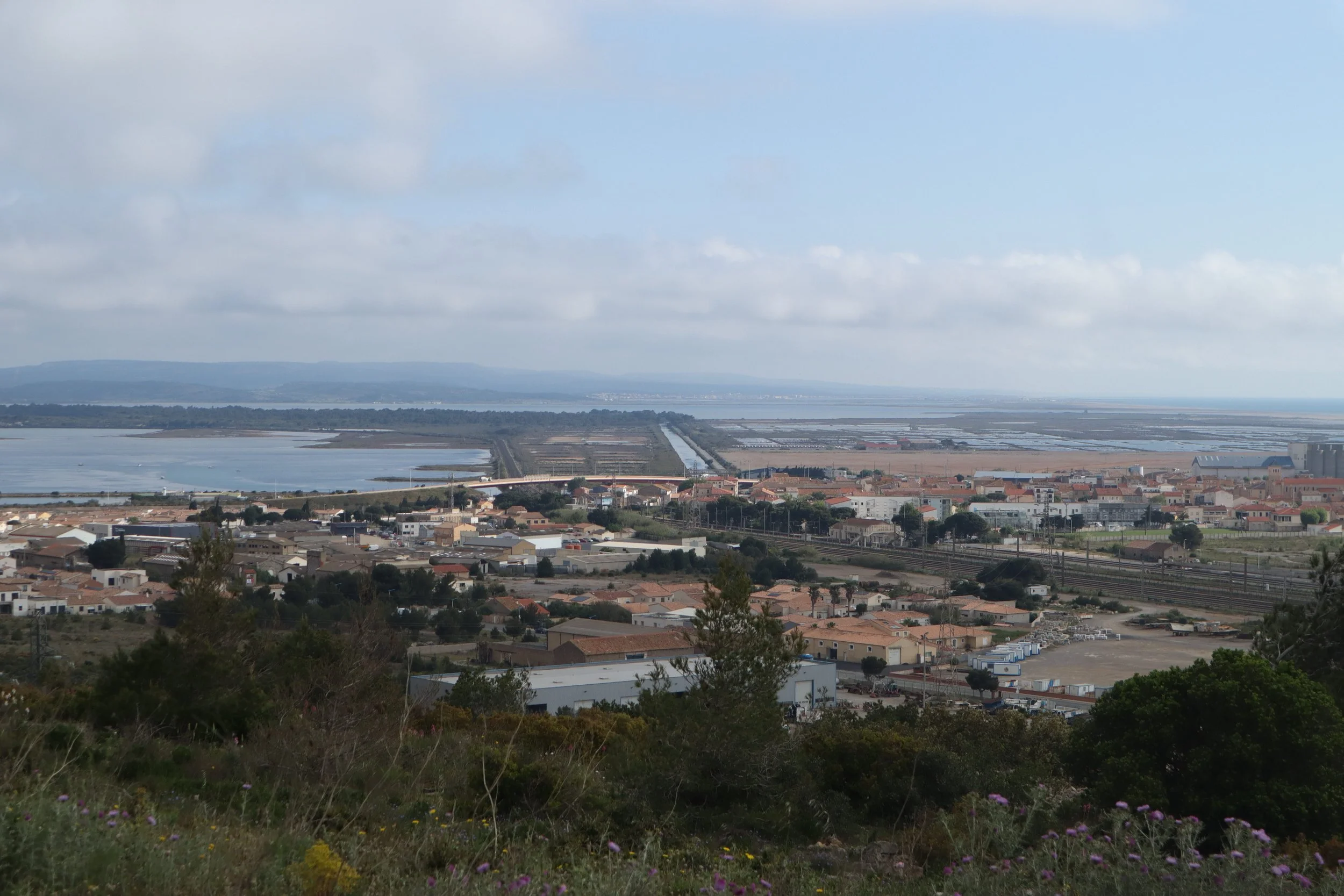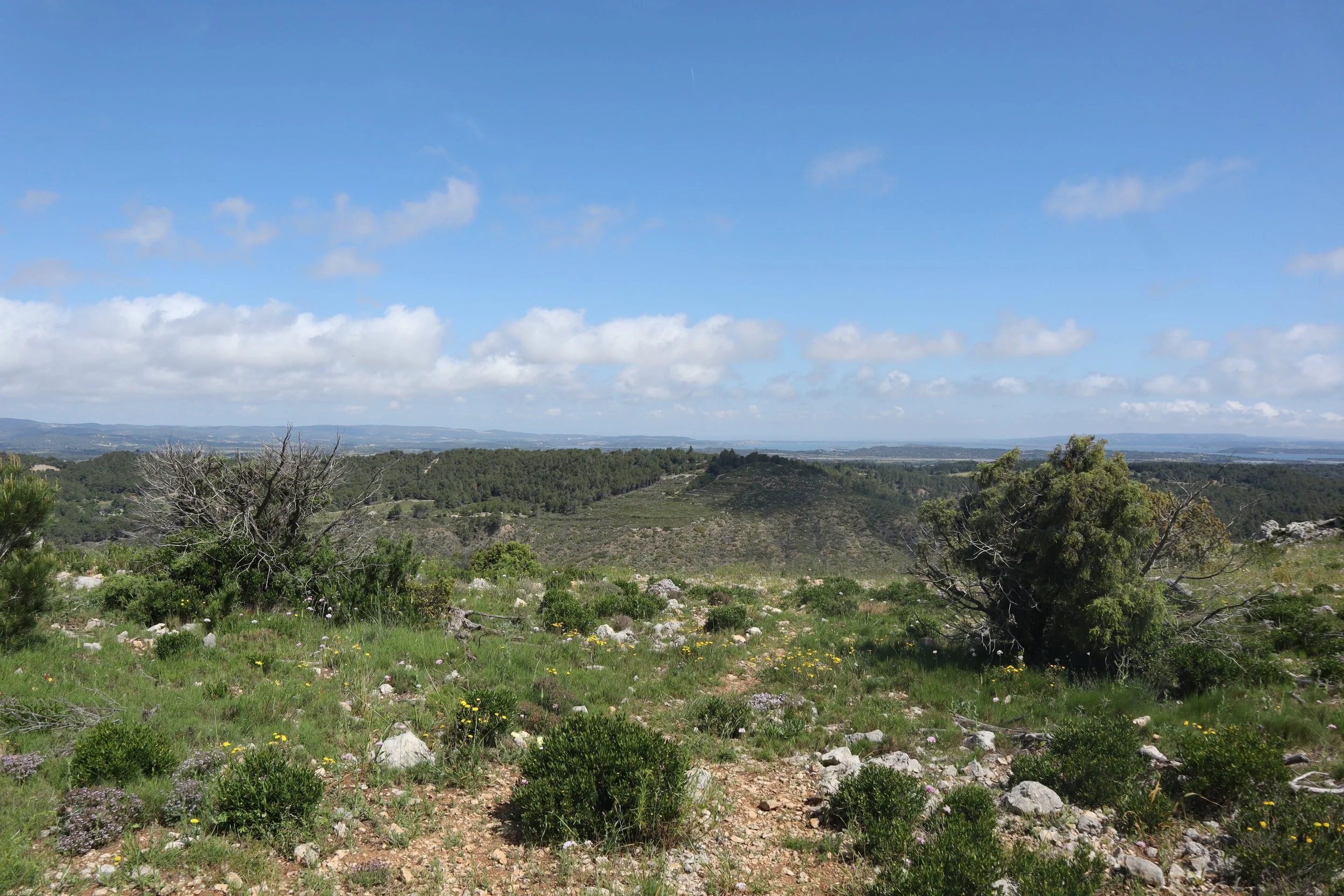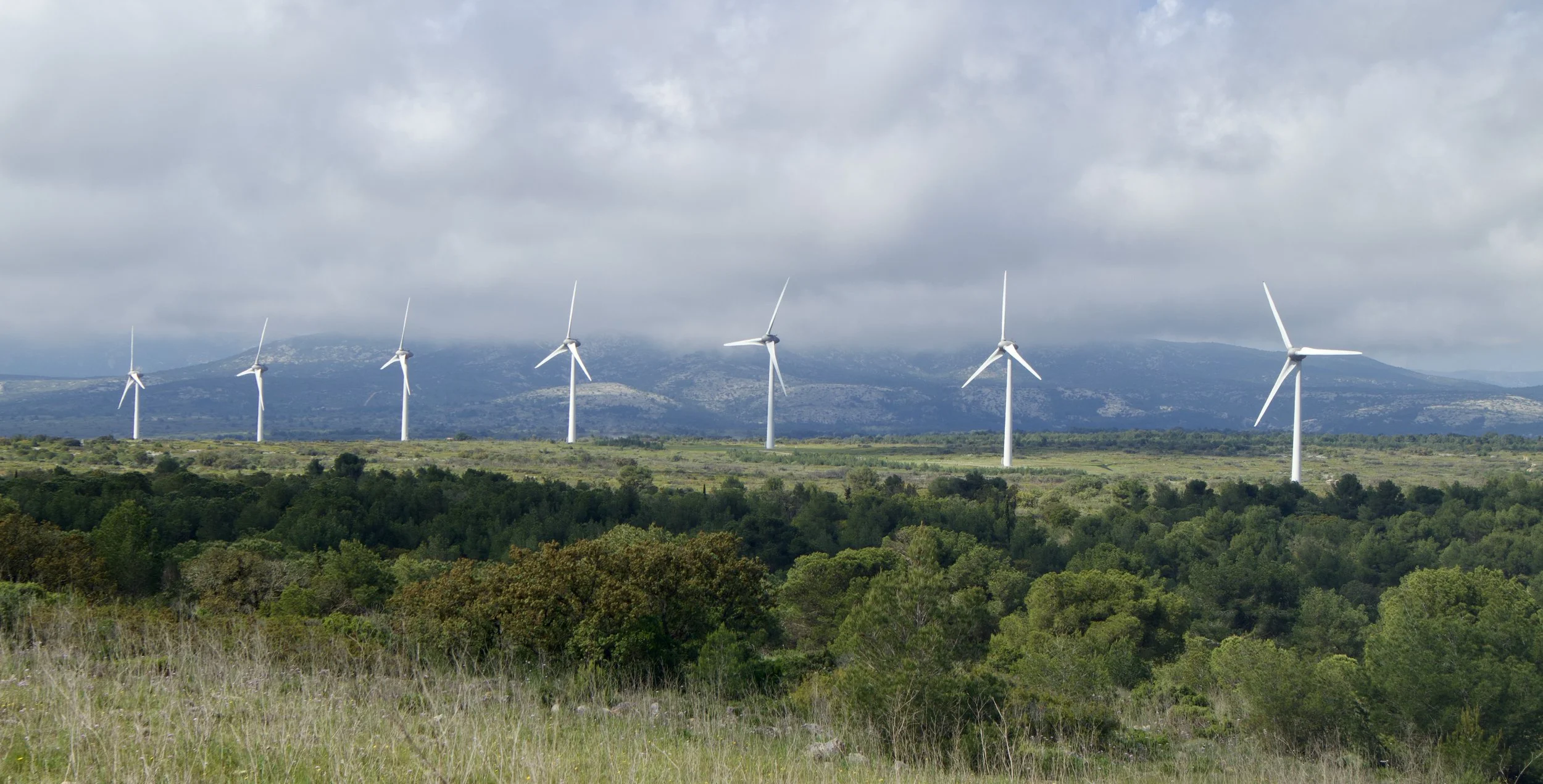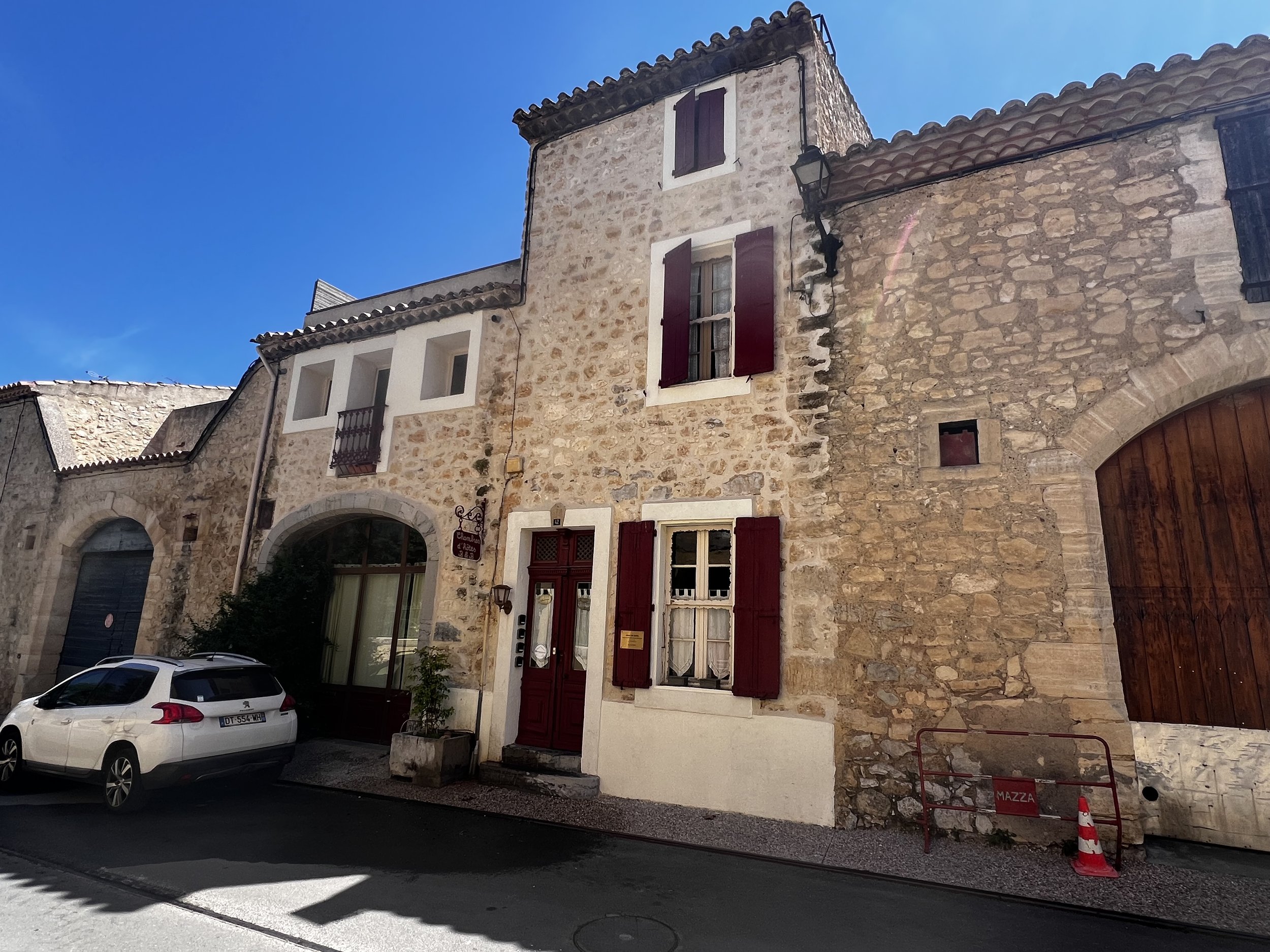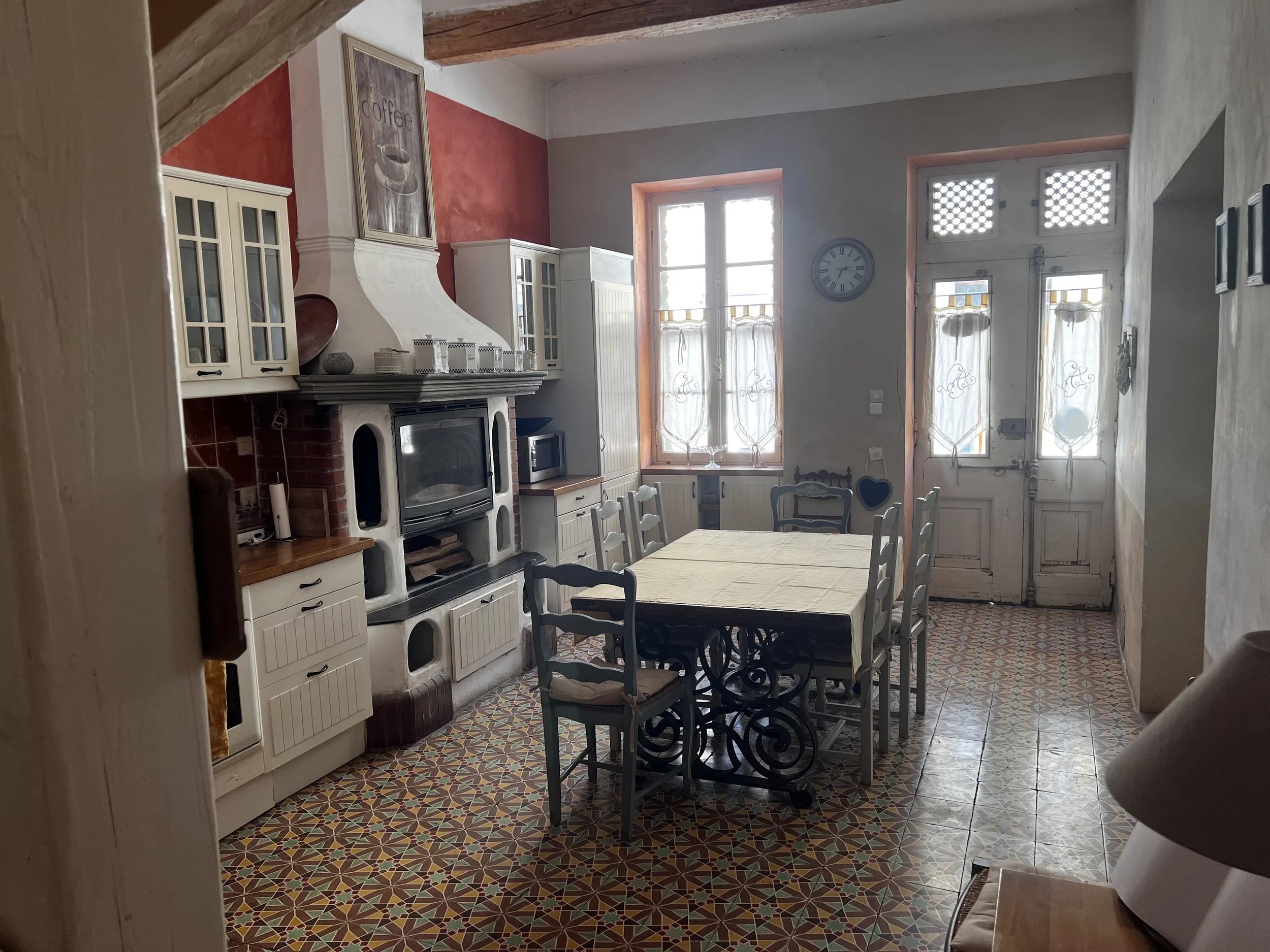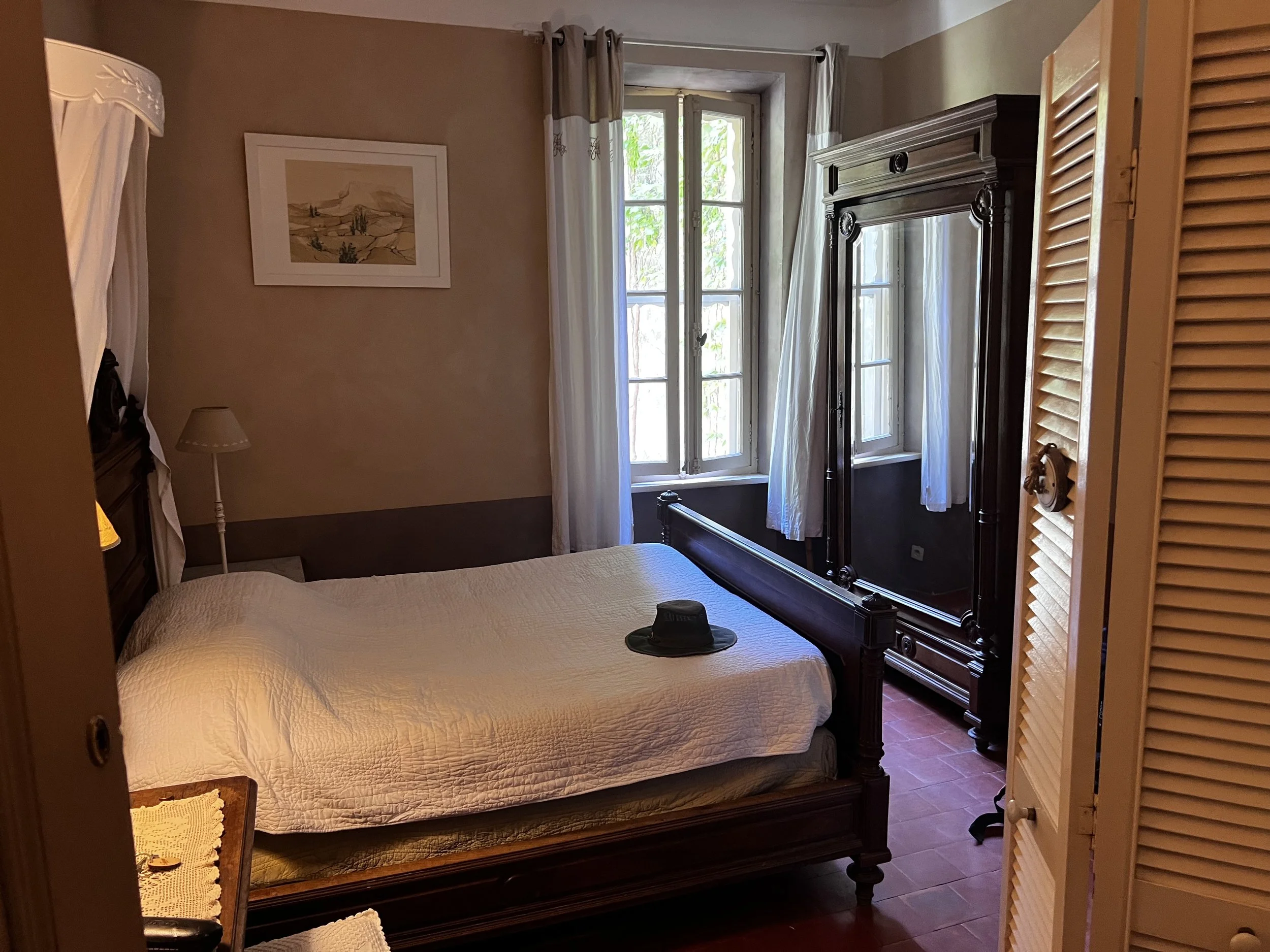The Cathar Way - 2025 Another Year, Another Adventure.
After last year’s walk along the Stevenson Trail I wanted to do another long distance walk in France but one with better weather and a bit more challenging.
Better weather meant going further south and something challenging meant heading for more mountainous terrain. A couple of areas looked suitable, Corsica or the Pyrenees, both promised fine weather and both offered excellent walking trails.
The GR20, across Corsica looked fantastic but was dismissed because one guide I looked at said it was the hardest walk in Europe. While this may or may not be true, the walk’s terrain elevation profiles were somewhat awesome therefore, in a effort to spare my knees I reluctantly removed it from the list of possible trips.
Turning to the Pyrenees, I was spoilt for choice, it’s a huge mountain range with some awesome walking, but most of the routes were too long for a two week trip. Then I found the Grand Randonee 367, the Cathar Way.
This path runs from Port-la-Nouvelle on the Mediterranean to Foix near Toulouse. It’s about 170 miles long, runs through the foothills of the Pyrenees and visits many of the sites and nine of the castles famously or infamously associated with the Cathar sect and the Church’s crusade against them in the early 13th century.
The Route - Porte-la-Nouvelle to Foix
So it’s the Cathar Way, a longish walk, hopefully good weather and fascinating history to enjoy, what more could I wish for? Well, wine of course, fortunately the route falls in the Department of the Languedoc and the Corbierres region, areas famous for wine., so that’s all the boxes ticked for a hopefully slightly epic adventure.
The plan is, in outline, quite simple, get the train to the start, walk for two weeks and get the train home, easy.
The details were, inevitably, a bit more complicated, I bought an old persons four day Interrail ticket in December and booked seats in January/February, it’s best to book as early as possible as interrail seat allocations on some routes are limited and get snapped up as soon as they are released by retired layabouts with nothing better to do with their time. I squeezed the whole outbound journey into 1 day, Lancaster to Narbonne, some 1200 miles
Lancaster to Euston - 05:13 to 08:00St
Pancras to Paris Gare du Nord - 10:24 to 15:38
Paris Gare du Lyon to Narbonne - 16:56 to 21:21
What could possibly go wrong?
St Pancras International Station
Gare de Lyon
Well………..
Spain, Portugal and possibly bits of Southern France could have a catastrophic failure of their electricity grid the day before you depart, causing chaos across the rail network, chaos that gets worse the further south you go.
It was therefore with some trepidation that I set off at 05:13 from Lancaster and arrived, somewhat to my surprise, 16 hours (including the time difference) and 8 minutes later at Narbonne, spot on time, no problems at all!
After a good nights sleep I caught a local train from Narbonne to Porte-la-Nouvelle, the start of the Cathar Trail, and by 9:00 I was on my way.
Looking back to Porte-la-Nouvelle from the first hill.
The guide book’s recommendation for the end of the first day is a village called Durban-Corbierrs, but that was 28km (17 miles) far too long for a first day, so I split it, stopping at Roquefort-les-Corbieres after only 11km (7 miles).
The walk from Porte-la-Nouvelle to Roquefort was a great way to get started. Within half a mile of the station I was out of the town and into the countryside, in initial short but steep climb took me from the coastal plain up and onto a limestone plateau.
The limestone plateaus here are similar to those in Britain, it is too rough and the soil too shallow to farm, but whereas in Britain these areas are used for sheep pasture, here the ‘Garrige Haute’ is left to nature. The result is miles of rough scrub; wild rosemary, thyme and juniper are the main shrubs and the hot air is full of their scent. No sheep or cattle live up there, only wild boar (I didn’t see any) roam free and hunting them is very popular, with different area controlled by different hunting groups.
Apart from hunting, the only other use for the land is the growing of wind turbines and while looking rather anomalous, up close they had a certain serenity as they slowly span in the warm, scented breeze.
The limestone landscape lasted for three or four very pleasant miles before the path took me down off the plateau and into the cultivated valley of Roquefort-Corbieres.
Cultivated is however a relative term and the soil in the valley was little better than that up on the plateau; pale dusty gravel more than soil, too thin and wretched to sustain anything except vines.
It it a truism of the wine world that the poorer the soil the better the wine. Give a vine rich deep hummus rich soil with loads of goodness and the wine put all its energy in growing big and green and fat, hardly bothering with grapes and the produce will be terrible. But make the vine struggle on poor soil and it put all its energy into its fruit and the wine is great.
It is true that in the past this area of France was more famous for quantity over quality but that has been changing and now Corbieres produces some very palatable wines.
Vines at Roquefort-Corbieres
Unfortunately the village doesn’t have a campsite so I’d booked a room in a gite, very similar to a b&b. I’d stayed in a couple last year on the Stevenson Trail and really enjoyed the experience. The one in Roquefort was so French it was almost in danger of becoming a cliche, an old three story house with thick walls, tiled floors and full of antique, slightly worn furniture.
Le Gite ‘Le Patio Des Cigales’
It was a lovely gentle way to finish my first day
